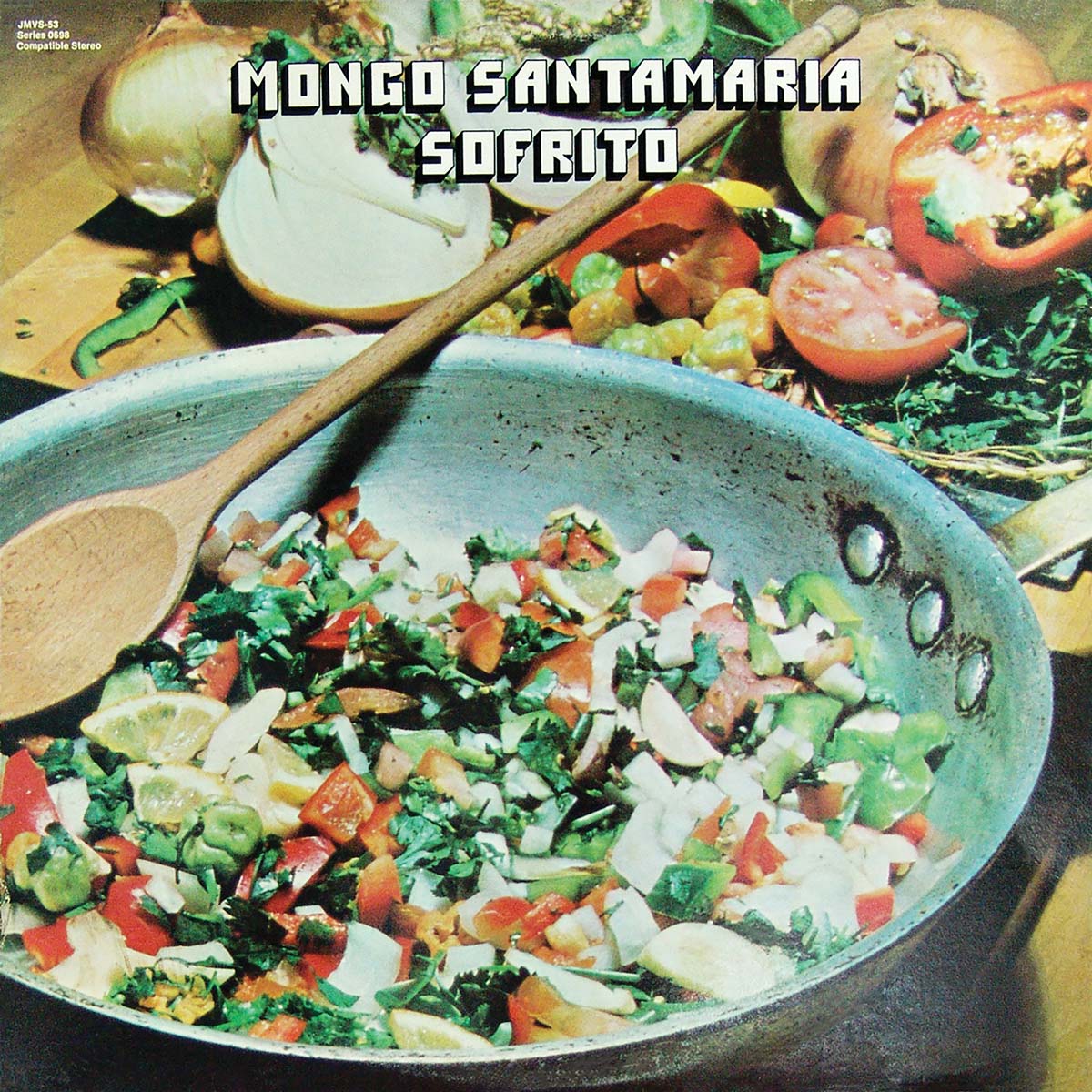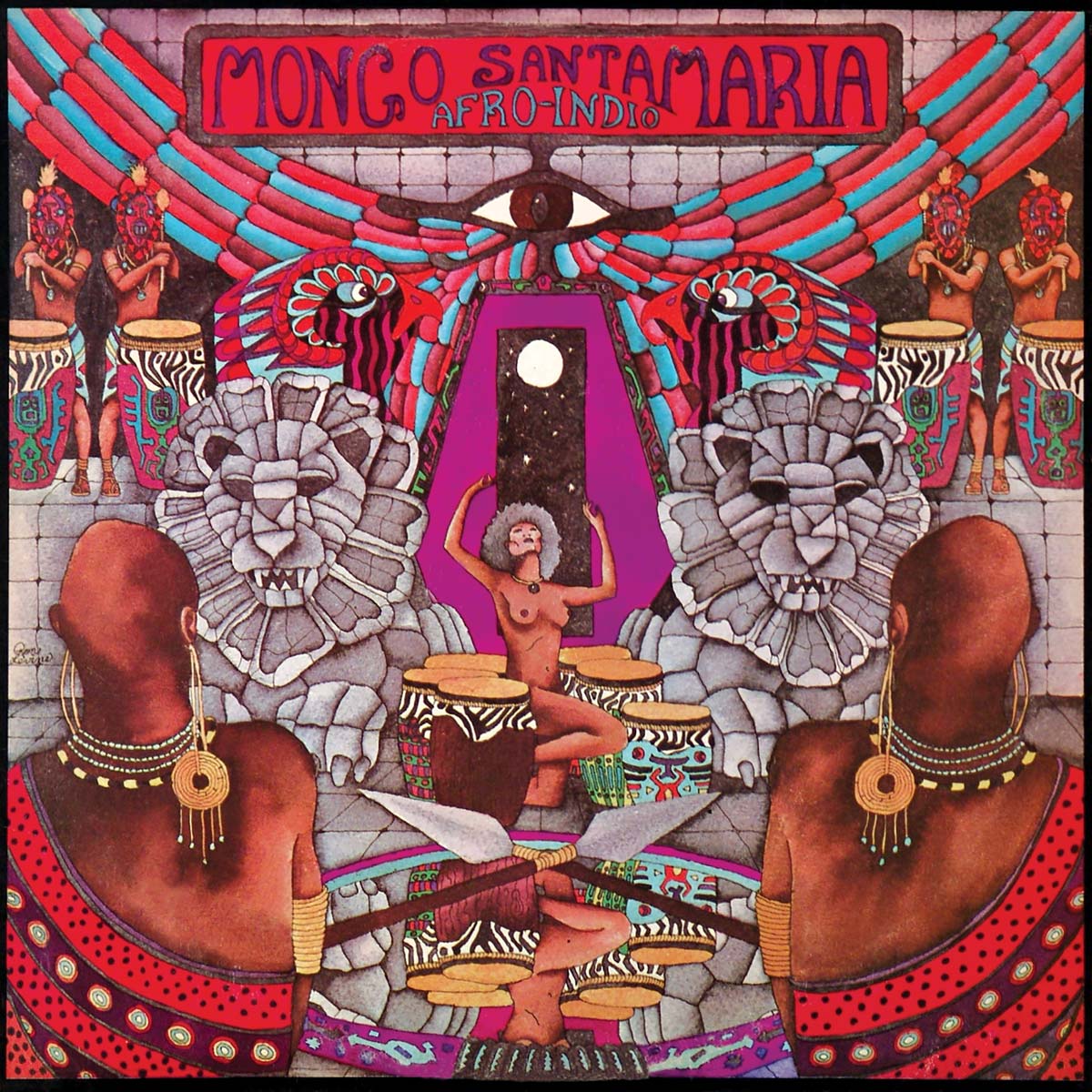
First time released in 4 years. This Mongo Santamaria classic is an evergreen and sounds even better remastered. A must-have for all fans of Tropical music.
Musician Mongo Santamaría needs no introduction. He single handedly helped make the conga drum a part of the American psyche in the 1960’s with his hit recording of Herbie Hancock’s Watermelon Man.
Born April 7, 1917 and raised in the Jesus Maria district of Havana, Cuba, Ramón Santamaría was steeped in the West African-rooted culture that permeated this impoverished area. It was the sound of rumba and son he heard in the solares (tenements) that served as his early percussion lessons. The West African-rooted religion known as Santería, with its complex rhythms and praise songs as well as his exposure to the songs of the Abacua, a semi-secret fraternal order and religion, grounded him in the rhythmic knowledge he would draw upon later in his own recordings..
Making a name for himself as first a bongocero in the son movement of the 1930’s alongside boyhood friends like Candido Camero and Chano Pozo, Santamaría would eventually come to the United States in 1950 as the conguero for pianist Damaso Perez Prado’s Orchestra. In 1951, he would start a seven-year tenure with timbale titan Tito Puente and bring percussionist Willie Bobo to the bongo chair, recording on most of Puente’s glorious outputs for RCA. But in 1957, the greatest Afro-Cuban percussion triumvirate ever assembled—Puente, Santamaría and Bobo, who had wowed audiences at New York City’s famed mambo palace, the Palladium Ballroom—would disband. Santamaría and Bobo would leave to the West Coast to perform in vibist Cal Tjader’s small Afro-Cuban jazz combo. Both would be featured soloists, recording some of the most incredible solos ever documented.
By 1961, Santamaría would become a leader, first recording with a charanga format (strings and flute) but would soon meet Marty Sheller, a young aspiring jazz trumpeter from Newark, New Jersey that would shape Santamaría’s musical vision into an identifiable sound that would become an archetype for small group Latin-oriented-jazz. Be-bop’s aggressive derivative—hard bop—was coming into its own in the 1960’s. It featured more blues-based melodies with a harder edge and often used funk elements within the confines of a two or three piece horn section. Santamaría would then add sounds of his native Cuba—mambo, son, cha-cha-cha, guajira, guaguancó, Afro-Cuban based liturgical rhythms, as well as Brazilian and Venezuelan elements—to create what would become the Santamaría sound.
As Sheller stated in a recent presentation he gave at Harvard: “The best guys for Mongo’s band were jazz players who could function in a Latin context or visa versa and be comfortable, versatile in both worlds.” Santamaria’s group (like jazz drummer Art Blakey’s) would soon become a small school with players like pianists Chick Correa, Herbie Hancock, Joao Donato, Rodgers Grant, Armen Donelian, flautist/saxophonist Hubert Laws, drummer/timbaleros, Frank “El Pavo” Hernandez, Carmelo Garcia, Steve Berrios, saxophonists Sonny Fortune, Bobby Capers, trumpeters Marty Sheller, Luis “Perico” Ortiz, Ray Vega, bassists Victor Venegas, William Allen, Eddie “Gua-Gua” Rivera, and vocalists Rudy Calzado and La Lupe. .
From the haunting opening of Armen Donelian’s Iberia with its authentic Brazilian samba feel to the sultry bolero-bossa music of Cruzan to the bluesy Spring Song where Santamaría explodes on the final vamp, these tracks contain trademarks of the Santamaría sound. Neal Creque’s Sofrito opens with an extended piano intro by Donelian and then breaks into a traditional montuno (vamp) for the Cuban guajira, the two sax/trumpet front line instantly identifies it as Santamaría’s band. Guest flautist Gonzalo Fernandez solo evokes the típico Cuban flute sound while Mike DiMartino on trumpet soars with bravura on what has become a Santamaría classic.
Santamaría’s Afro-Cuban religious and rhythmic roots are showcased on O Mi Shangó. The song opens with the ceremonial triumvirate of double headed batá drums and sets the stage for the legendary percussionist, vocalist Julito Collazo, to sing in Yoruba praising Shangó, the deity of thunder and Santamaría’s patron saint in Santería. Willie Allen’s unique arrangement is equal parts folkloric melody and funk and provides a launching pad for legendary percussionist, vocalist Mario “Papaito” Muñoz’s soneos (vocal improvisations) in Spanish. Five on the Color Side and the disco-esque Secret Admirer are compositions by Allen. Of note is the unique tandem of voice and bass clarinet in the melody of Five with Al William’s bluesy alto flute solo overdubbed in octaves. The album closes with two compositions by Sheller titled Olive Eye and Princess where transitional solo sections are a combination of jazz mambo with funk, featuring Santamaría on an exciting solo.
Santamaría passed away on February 1, 2003 leaving a fantastic recording legacy. Like the album’s title, the Mongo Santamaría sound was a combination of ingredients that added a distinctive taste. Savor the sound of Sofrito.
Mongo Santamaría:Sofrito
Personnel:
Mongo Santamaría – congas, leader
Steve Berrios – drums, timbales, itotele batá drum, acheré, percussion
Greg “Peachy” Jarmon – bongó, cencerro, percussion
Mike “Coco” DiMartino – trumpet, flugelhorn on Spring Song
Al William – tenor, soprano sax and alto flutes
Roger Rosenberg – soprano, alto and baritone sax, bass clarinet on Five on the Color Side
Armen Donelian – piano, fender rhodes piano, synthesizer
Eddie “Gua – Gua” Rivera – electric bass
William “Willie” Allen – electric bass on O Mi Shangó.”, Five on the Color Side and Secret Admirer
Bernard Purdie – drums on Secret Admirer
Gonzalo Fernandez – flute solo on Sofrito
Julito Collazo- batá drum and O Mi Shangó, Iyá batá on Secret Admirer
Angel “Cachete” Maldonado – okonkolo batá drum on O Mi Shangó and Secret Admirer
Edna Holt – vocal on Five on the Color Side
Marcelino Guerra, Marcelino Valdez, Mario “Papaito” Muñoz – Chorus on Sofrito and O Mi Shangó
Julito Collazo – Yoruba vocal on O Mi Shangó
Mario “Papaito” Muñoz – Spanish vocal on O Mi Shangó
Arrangements:
Armen Donelian – Iberia, Cruzan and Spring Song
Marty Sheller – Sofrito, Olive Eye and Princess William “Willie” Allen – O Mi Shangó, Five on the Color Side and Secret Admirer
Produced by Marty Sheller
Jerry Masucci, Executive Producer
Recorded at Bell Sound Studios, New York City 1976
Engineered by Jon Fausty
Originally released by Vaya records (P) and © 1976 Vaya Records and distributed by Fania Records, Inc.
Iberia (Armen Donelian) 4:34
Cruzan (Armen Donelian) 7:39
Spring Song (Armen Donelian) 7:07
Sofrito (Neal Creque) 5:39
O Mi Shangó (Mongo Santamaria) 4:20
Five on the Color Side (William Allen) 5:46
Secret Admirer (William Allen) 4:27
Olive Eye (Marty Sheller) 3:27
Princess (Marty Sheller) 5:00
Written by Bobby Sanabria




